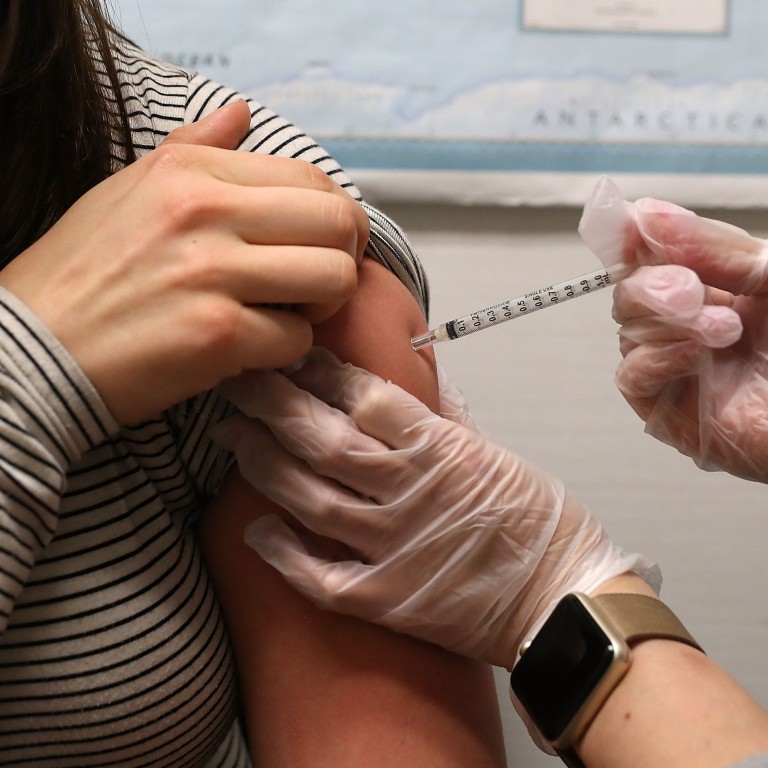
Early childhood flu exposure may determine immunity in later life, but not all strains are equal: scientists
- People infected with H1N1 can fight off the H3N2 strain but the reverse is not necessarily true, finds paper
- Influenza immunity findings add weight to the argument that children should be vaccinated but the success of flu shots depends on several factors
Immune defence against general flu may depend on the specific type of viral strain a person first came into contact with in the early days of their life, according to a new study.
But getting H3N2 first could not provide similar protection against H1N1.
“Humans typically encounter only a limited number of viruses early in childhood and therefore have somewhat narrow immune memory skewed toward viral strains encountered early in life,” said Hensley and colleagues in a peer-reviewed paper published in the Proceedings of the National Academy of Sciences of the United States of America (PNAS) this month.
H3N2 has been the dominant influenza strain in circulation on our planet over the past decade. It shares some similarities with H1N1, such as the ability to infect pigs. But there was a genetic gap between the viruses wide enough for scientists to put them in different groups.
Hensley and his team analysed data in health records and collected blood samples from volunteers with different infection histories to examine how their antibodies responded to various influenza types. They also conducted experiments on ferrets.
Pandemic exposes inadequate links between public, private hospitals
They found that the H1N1-induced protection against H3N2 remained robust across the board, but it was not the case when the sequence of infection was reversed.
Influenza viruses had some common codes in their genetic sequences. This led to some protein structures that could be recognised and remembered by the immune system for different strains.
Immune cells with such memory could generate a specific type of antibodies to target specific structures. If the viruses shared similar structures, why couldn’t an early H3N2 infection produce similar protection against H1N1?

The scientists have no good answer to the question yet. One possible explanation, according to Hensley, could be the difference in antibodies that were generated by the immune system after different types of infections.
The H1N1-induced antibodies could “cross-react” with H3N2 while those of H3N2 presented a “mismatch” to H1N1, according to the paper.
Severe flu alert as coronavirus weakens medical systems
The discovery added weight to the argument that children should have flu shots, according to the researchers. Most people got influenza naturally around the age of five, the time they went to school, and this limited their exposure to different species of the virus.
A flu shot usually contained strains from three different groups, including H1N1 and H3N2 variants that the WHO predicted would be dominant in circulation each season. In theory this “cocktail” approach could boost general flu immunity.
But the exact effect “remains to be seen” because it would require a direct comparison between the vaccinated and general populations, said Hensley and his colleagues.
An epidemiologist with the Chinese Academy of Sciences in Shanghai said the flu virus mutates rapidly, its relatively unstable structure leading to constant changes in genes. Whether an H1N1 infection can provide broader protection requires more evidence.
“The mutation is so fast, even the same H3N2 strains can make people sick again and again with some small differences in their genes that occur every season,” said the scientist, who asked not to be named because of the academy’s media policy.
Whether a flu shot was effective “depends largely on luck”, she added.

